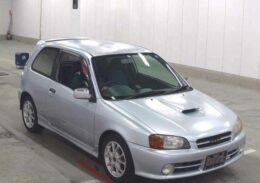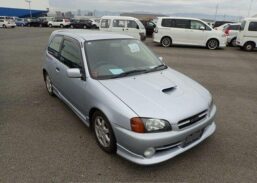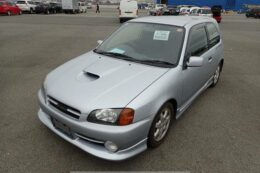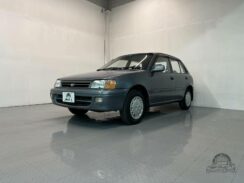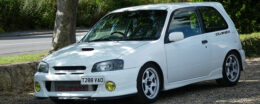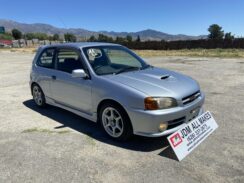
Toyota Starlet Buying Guide
The JDM hot hatch category has some of the most underrated JDM cars, one of which is the Toyota Starlet. But like most hot hatches, very few buyers would consider it due to the presence of the adored Honda Civic. Also, when it’s a priority to get a Toyota as a first JDM car, a front-wheel-drive Starlet sounds less appealing due to the presence of iconic tuner cars such as the Toyota Sprinter Trueno and sleeper sedans such as the Toyota Chaser.
Buyers have only recently started leaning towards the Starlet due to its affordability since most tuner car prices are hitting an all-time high. Today, the Toyota Starlet remains a legend in Toyota’s halls of fame as it inspired the Yaris, which has evolved to become the best small hot hatch taking the crown away from the Germans. The Yaris GR has been praised by car enthusiasts, even those who wouldn’t buy it as it doesn’t suit their driving style, and some have even gone ahead and bought it.
Unknown to many, the Starlet competed in the A5 Class at the WRC while in its fourth generation and had several podium standings. Did Toyota Sell the Starlet in the United States? Only the rear-wheel-drive third-gen Starlet found its way to United States soil between 1981 and 1984. Turbocharged variants introduced later in 1984 were strictly reserved for the Japanese market, which is one of the reasons you should buy one.
Toyota Starlet Pros and Cons
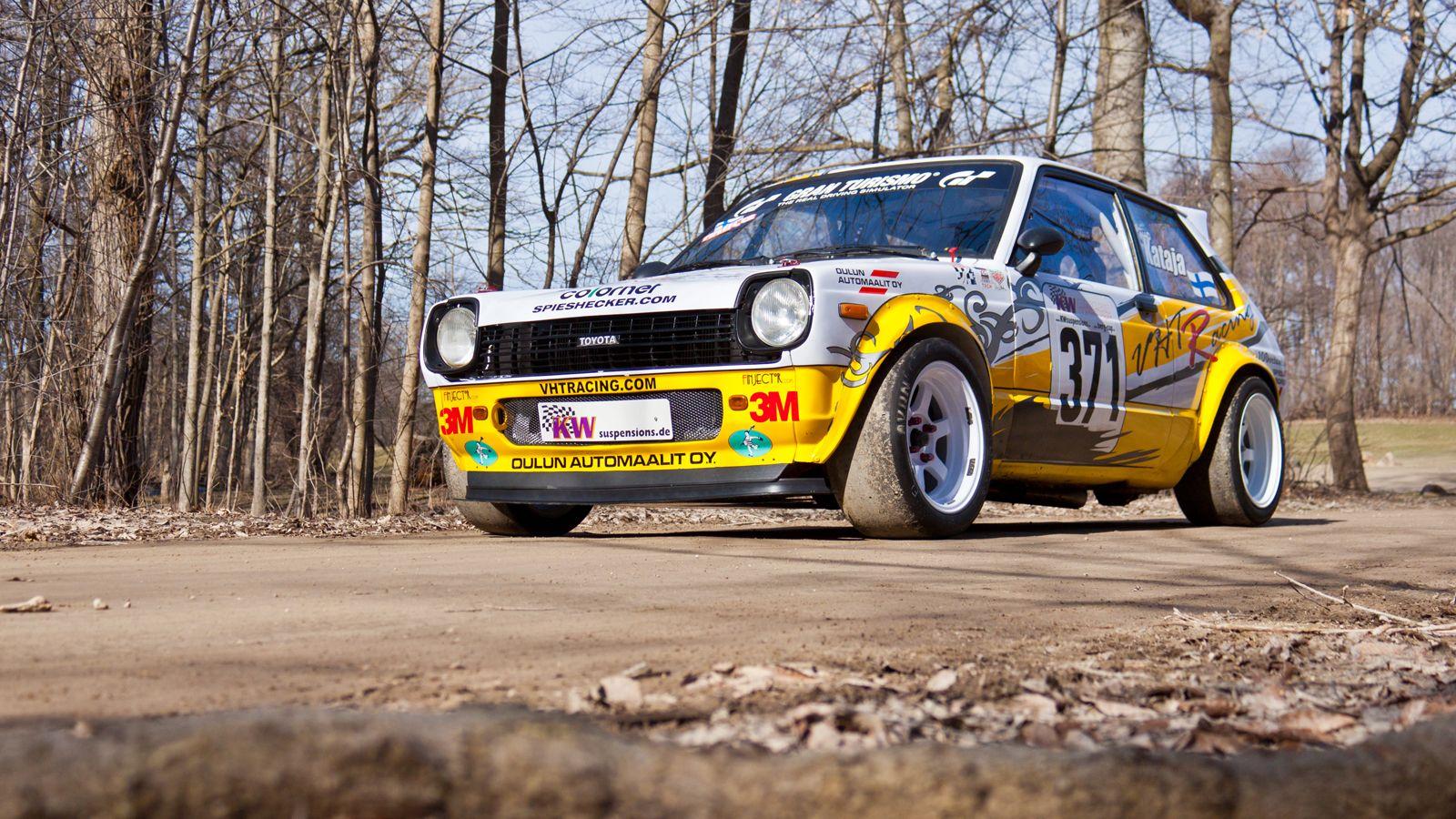
Pros
Cheap To Buy and Maintain
Price is one of the major determining factors when buying any car, JDM cars included. Regardless of what these cars represent in the automotive world, one must ensure not to overpay, even with prices increasing as we enter a period where most cars from the 1990s can be legally imported to the United States. Toyota Starlet prices start at less than $5,000 for older generations, including units with a turbocharged engine.
Newer turbocharged variants and limited edition units such as the Starlet GT and Glanza retail for more. Most of them sell for figures above $10,000, but you get value for money compared to the Honda Civic, and it’s guaranteed it will sell for more than that after a while. The transmission also determines the Price of a Toyota Starlet, whether imported or locally used. Units with an automatic transmission can go for half as much as those with a manual transmission.
Like any other Toyota, the Toyota Starlet has exceptional reliability and durability. Thus maintenance costs, which mainly involve insurance, gas, and fluid changes, are affordable even for a first-time car owner making ownership flawless. Insurance costs rarely exceed $400 a month, and Toyota parts are reasonably cheap.
Fun To Drive
The main reason it’s better to buy a Toyota Starlet over a modern Corolla or Prius is that it’s exciting to drive, especially if you get one with a turbocharged engine mated to a manual transmission. It might be front-wheel-drive, but commutes to and from school or work become satisfying more than the Prius’ fuel economy, comfort, and safety features. You can also get the Toyota Starlet with a rear-wheel-drive platform, as Toyota switched to front-wheel-drive in 1984, but the engine options aren’t appealing.
0-60mph in a Toyota Starlet might take forever, but anyone who buys one knows that and instead focuses on the thrill of the exhaust screaming at 8000rpm and waiting to bang second gear on the short throw shifter. The first drive will stamp a smile on your face that will be hard to wipe off and always comes back when you start the engine after a long week without driving the car.
Handling is top-notch in the Starlet, which is unexpected in a front-wheel-drive JDM car, particularly in units with Toyota’s Electronic Modulated Suspension, TEMS. It’s an active suspension first introduced in the third-generation turbocharged variants and refined in the fourth generation. The TEMS system automatically responds to the driving terrain and can be operated manually to suit a driver’s driving style. Very few cars from the 1980s and 1990s had such advanced suspension systems.
Easy To Work On
Should you pick a Toyota Starlet as your first JDM project car? Yes. This is the sign you’ve been waiting for if you’ve been considering it as your first JDM project car. For beginners, it’s easy to work on a Starlet as all it takes is a YouTube video and an online repair guide. After that, you are already replacing the drum brakes with disc brakes and the 4-stud hubs to replace them with 5-stud hubs, which are among the first mods Starlet owners recommend on older model years.
Working on an uncomplicated but well-built car is every car owner’s dream as it reduces maintenance costs, improves craft around cars, and helps gain familiarity with the vehicle. The transversely mounted engine in the Toyota Starlet makes it easy to perform fluid changes, inspect fluid lines, and even work on the engine itself when it’s still in the car. The same applies to chassis and suspension work since it’s lightweight, and you can lift the car on home garage jack stands.
Dependable
The Toyota Starlet makes the perfect garage addition if you want something that is daily-drivable or has better fuel consumption than your Toyota Supra. It fits into the tiniest parking spaces since it’s almost similar in size to an average Kei car. Do you have a project car that will take longer to complete than expected and want to avoid a boring car to drive while at it? The Toyota Starlet is among the best candidates, especially if you are into older Toyotas. Get one in mint condition, upgrade a few parts, and you’ll have the best runabout.
Cons
Poorly Built Interior and Impractical
One of the major disadvantages of buying small hot hatches like the Toyota Starlet is that they are less practical and have poorly built interiors. Most of them were made in two body configurations, a two-door or a four-door hatch, with both cars having rear seats. Legroom in the Toyota Starlet is terrible, especially in the back seats since they can’t be adjusted, and the headroom is pretty similar. Tall drivers might find it difficult since wiggle room in the front seat is minimal, and the roof is low as it recedes to merge into the A-pillar.
Toyota is known for making reliable and bulletproof vehicles but also for making the worst interiors on cars, mainly consisting of plastic trims, poor-quality fabrics, and lacking the barest minimum of features such as cup holders. An interior overhaul and aftermarket seats should be among the top ten mods should you buy an old Toyota Starlet. But if you can withstand constant rattling, failing door locks, and worn-out floor mats, enjoy the car as it is.
The Toyota Starlet makes the perfect beginner car or 16th birthday present for a teenager, but once they notice they can’t fit their friends comfortably for a road trip, they’ll start looking for better options. But if you got it for them as their first JDM car, they’ll get used to it since such issues are unavoidable in most JDM cars.
Limited Aftermarket Support
Buying a Toyota Starlet as a project car is great. Even so, patience must be exercised by anyone who decides to build one since it has little aftermarket support compared to its biggest competitor, the Honda Civic. Interchanging parts from other Toyotas is possible, but getting parts made specifically for the Toyota Starlet is better. But it’s not that aftermarket parts are unavailable. You’ll either have to wait for ages for parts to be shipped that took months to find or pay ridiculous prices for custom-made parts. For this reason, most owners prefer keeping their Starlets stock or engine swap with engines with excellent aftermarket support, such as the 3S-GTE or 4A-GE.
Toyota Starlet Common Issues
Front Suspension Failure
Toyotas might be reliable and bulletproof, but this does not mean that faults and failures are dismissible when buying them. Luckily, most issues and problems, such as front suspension failure in the Toyota Starlet, are found on poorly maintained or high mileage cars. After all, not everything on the car was made to last a lifetime, especially if it’s mechanical or electrical.
So what goes wrong with the Starlet’s front suspension? Front suspension failure is common in front-wheel-drive cars, and the issues mainly start at the ball joints, control arms, and bushings. This is because the front suspension has more stress than the rear, being responsible for propelling and turning the car. Also, being front-engined, the car is heavier at the front, but this majorly affects the shocks, struts, and springs.
Having the front suspension rebuilt on a Toyota Starlet should fix the noises heard when corning and going over bumps, and the antiroll bar bushes in later model years shouldn’t be forgotten. Any cracks or bends in the control arms should be taken seriously since the only solution is to replace the control arms. If the noises persist and the car sits a bit low, check the strut towers and the engine mounts known to wear out rapidly on older cars since they’re made of rubber.
Power Loss
In old JDM cars, loss of power is common, but most owners only take it lightly and relate the issue to the ignition system, which is sometimes the case. Carbon buildup in the Toyota Starlet is one of the culprits resulting in loss of power, mainly occurring in the 4E engine. It’s normal for an engine to have carbon buildup since the carbon is a by-product of fuel and air combustion. But if you notice excess buildup on the sparkplugs, backfires, and hard starts, it’s time for an engine flush to clear the buildup.
Various issues could lead to carbon buildup. For starters, if there’s insufficient air or fuel in the engine, combustion will be incomplete, resulting in excess fumes. Replacing the old faulty fuel pump, air filter, and fuel injectors should fix starvation. Some owners of cars with the 4E engine recommend removing the mass airflow sensor behind the air filter as the engine runs better without it. However, doing all that without flushing the engine with a carbon buildup cleaner will only partially solve the problem.
In turbocharged variants, turbo failure and boost leaks are common, leading to loss of power in the Toyota Starlet. Turbo failure is mainly caused by old age and over-boosting as it cracks between the port and wastegate. Aging is unavoidable, and over-boosting weakens the turbocharger. That’s why replacing the turbocharger on a Toyota Starlet is advisable if you drive hard. While at it, check the boost lines for cracks, dents, gasket leaks, and loose clamps, which result in boost leaks and might need to be replaced when installing a new turbo.
Engine and Turbo Overheating
Like the interior build quality, the cooling system in the Toyota Starlet isn’t good enough, causing the engine to overheat. Sometimes the cause can be minor such as a broken or clogged coolant line which is easy to fix. But some issues, for example, a leaking radiator or water pump failure, are too significant to ignore. Also, an old or worn-out intercooler doesn’t sufficiently cool hot air from the radiator, causing increased temperatures in the combustion chamber.
Inspecting and replacing faulty cooling system components, starting with the thermostat, water pump, and radiator cap, known to lose pressure, is the only way to gauge if the engine is getting sufficient cooling. Damage to the intercooler is mainly caused by road debris which can be prevented by installing a mesh in the hood scoop. But it’s not only engine overheating that will light up the instrument cluster.
The turbocharger will overheat if it isn’t getting enough oil to cool it; thus, the check engine light will come on. This is caused by clogged turbo oil lines preventing circulation or low engine oil and leaking oil supply lines causing starvation. If not fixed, heat from the turbocharger heats the bearings increasing friction exerted onto the turbo housing, which puts the turbocharger at risk of blowing.
Failing Electronics
If you’ve tried using the stereo or AC in a car from the 20th Century, you’ll know most of the time, it doesn’t work. It’s not that different in the Toyota Starlet or any other JDM car made during that period, and some electrical issues should be expected. Some, such as headlight and wiper motor failure, are minimal, while others, such as starter motor failure, deem the car undrivable and can be frustrating. Rewiring the wiring system and replacing the fuses and harnesses are the only solutions to prevent such shortcomings since most of these are too brittle to withstand constant use.
Average Prices
With prices starting at approximately $3,000 for a base spec trim, the Toyota Starlet is among the cheapest beginner JDM cars. It has no demand nor status in the car community that drives prices high, unlike most JDM cars today. Toyota Starlets with turbocharged engines go for a $10,000 minimum, but they are still worth the price considering how much fun they are to drive and hold value pretty well.
What To Look For When Buying a Toyota Starlet
If you are in the market for a Toyota Starlet, avoid buying one with the 3-speed automatic transmission, as it stresses the engine even under the lightest load. The four-speed automatic transmission is better but less engaging to drive than any manual transmission option. Also, manual transmissions are less problematic and are easier to repair, making ownership flawless due to reduced maintenance costs.
The 4-cylinder engines on the Toyota Starlet aren’t as tunable as those in other Toyota Sports cars, like the Toyota Celica, and they are also sensitive to mods. Once they are modified and tuned, they can turn into money pits, and buying one without or with minimal mods is better. If a Toyota Starlet has an engine swap, the better since it’s possible to make more power from a K-series, B-series, or 4A-GE engine, which are some of the best engine swaps on a Toyota Starlet. Lastly, check for the usual rust spots on JDM cars, test drive the car and ask for all documentation before making the purchase.
Comparable Alternatives
- Honda Civic (Buying Guide)
- Nissan Pulsar (Buying Guide)
- Suzuki Alto (Buying Guide)
- Honda City
- Mazda Lantis
- Mitsubishi Mirage
Models and Specifications
1973-1978 Toyota Starlet (P40/P50)
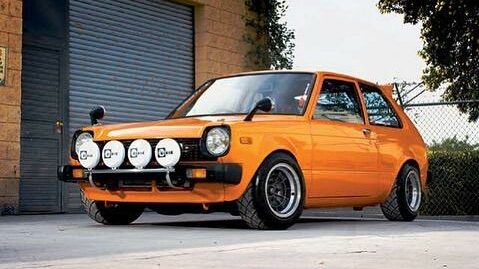
Toyota launched the first-gen Starlet in 1973 as an economical version of the Toyota Publica and the Corolla E30. Most parts, including the body panels, were carried over from other Toyota models onto the Starlet to reduce manufacturing costs, making it difficult to tell early models apart. Unlike the Corolla E30, produced as a liftback coupe or sedan, the Starlet was produced as a sedan or two-door hatch.
The Starlet P40/P60 is powered by a 1.0-litre or a 1.2-litre engine driving the rear wheels via a 2-speed automatic or 4-speed manual transmission. Toyota later introduced a sportier trim level with flared fenders and sportier wheels to compete against the Honda Civic CX-S sold as the Starlet 1200 SR. It had a 5-speed manual transmission instead of the 4-speed in entry-level Starlets.
1978-1984 Toyota Starlet (P60)
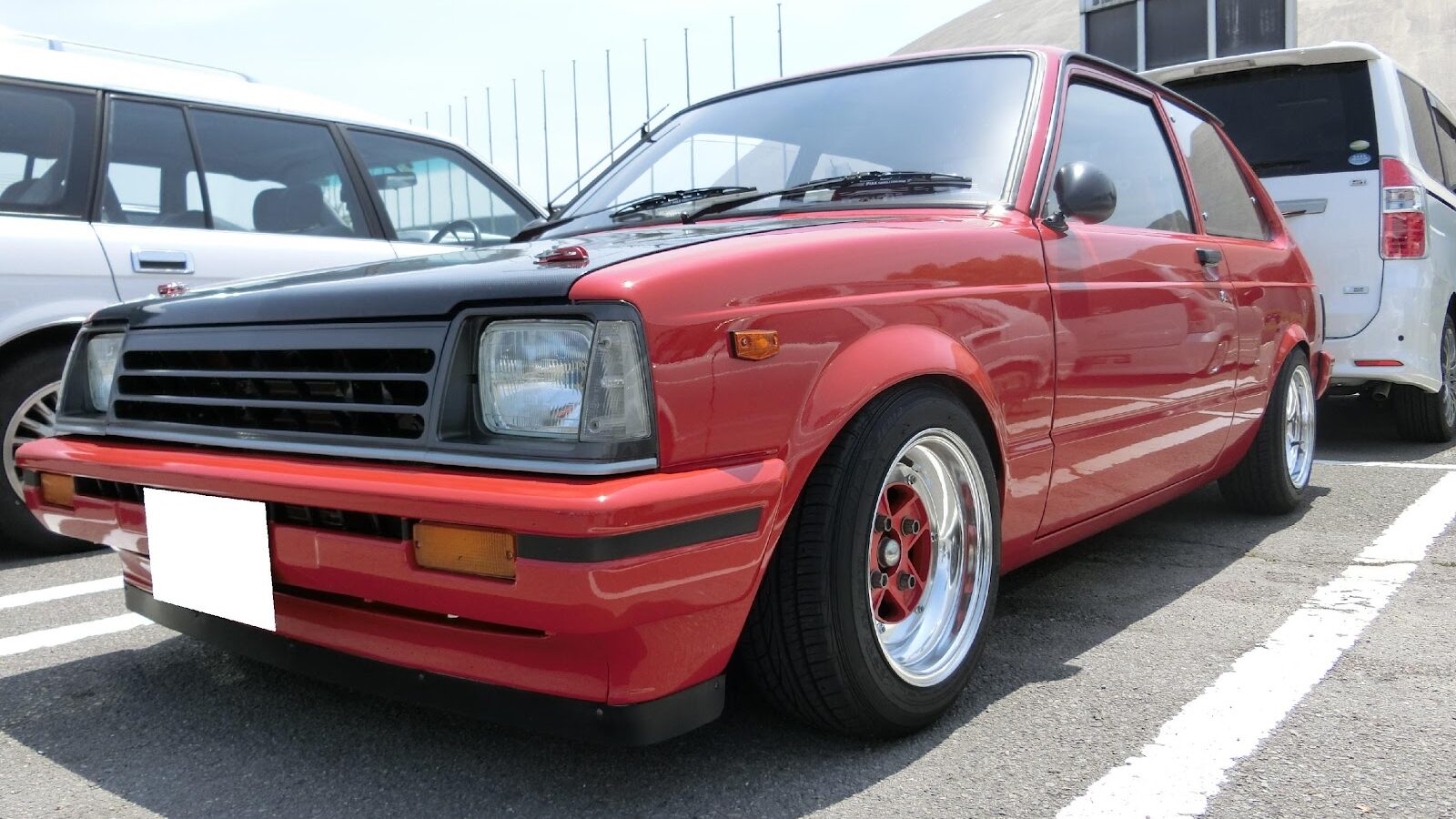
Due to increasing demand for transportation services in Japan, Toyota added a van and station wagon to the Starlet lineup for the Japanese market, but the sedan was discontinued. Buyers could opt for a four-door 5-passenger station wagon or a two-door van for commercial purposes. The two-door Starlet hatchback was also sold in similar configurations.
During the second generation, the Toyota Starlet was sold outside Japan but never got to the United States, unlike the Honda Civic. Engine and transmission options remained similar as in the first-gen Starlet but with the addition of a 1.3-litre engine and a 3-speed automatic transmission.
1984-1989 Toyota Starlet (P70)
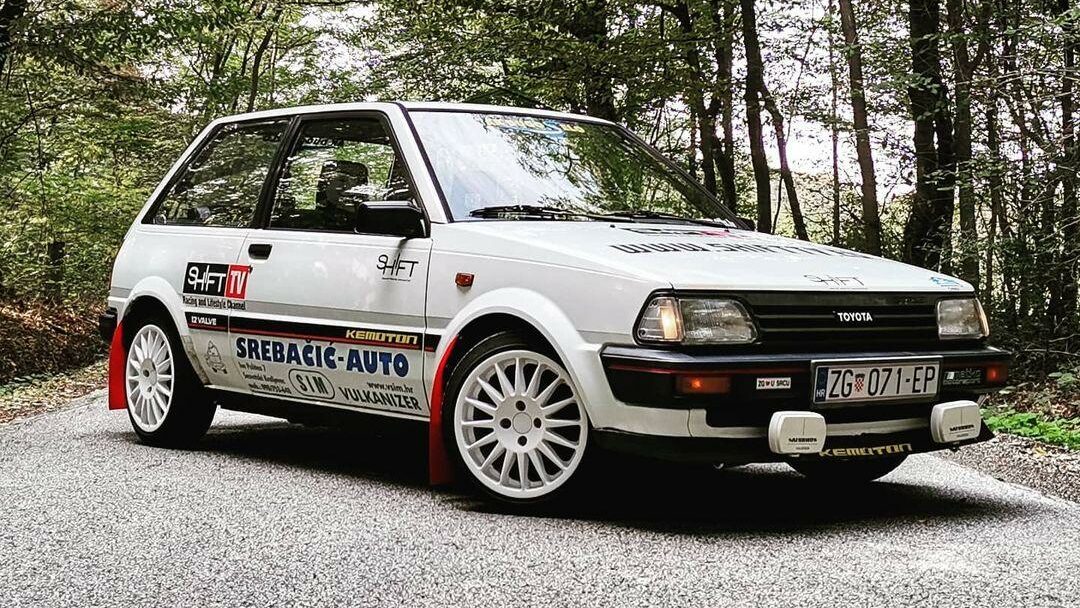
Like the Toyota Levin AE86 and Corolla E80, the third generation Toyota Starlet got a front-wheel-drive platform as opposed to its predecessors, which were rear-wheel-drive. The van and station wagon were now being sold in export markets. Toyota also diversified the trims depending on the engine options and size, thus giving buyers a wide range to choose from.
Entry-level wagons, vans, and hatchbacks such as the DX, LX, and XL got the 1.0-litre, 1.3-litre, and 1.5-litre diesel naturally aspirated engines mated to a 4-speed manual or 3-speed automatic transmission. The turbocharged 1.3-litre engine mated to a 5-speed manual transmission was only used in the Starlet Turbo R and Turbo S hatchbacks that also got Toyota’s TEMS active suspension.
1989-1995 Toyota Starlet (P80)
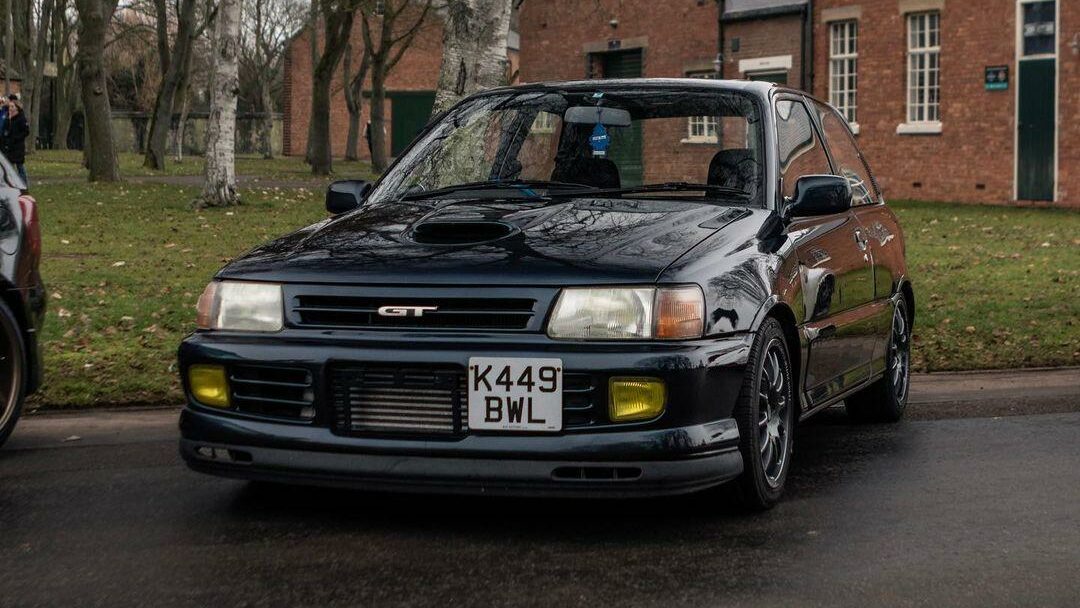
1989 was the last year that Toyota produced the van and station wagon variants of the Toyota Starlet, as the fourth generation was only produced as a 2-door or 3-door hatchback. Most JDM car manufacturers in the 1990s were adopting a rounder design for their cars, and Toyota did the same for the Starlet, besides adding new front and rear bumper designs based on the trim level.
Apart from the design, there were many upgrades on the P80 Starlet, the most significant being the introduction of the twin cam 1.3-litre 4E engines in NA and turbocharged form. The 1.0-litre and 1.3-litre E series engines remained the same as in the P70 Starlet. Also, all-wheel-drive, ABS, an LSD, and a rear strut bar were optional on the Starlet GT Turbo. You get the fourth-gen Starlet with a 3/4-speed automatic transmission or a 4/5-speed manual.
1996-1999 Toyota Starlet (P90)
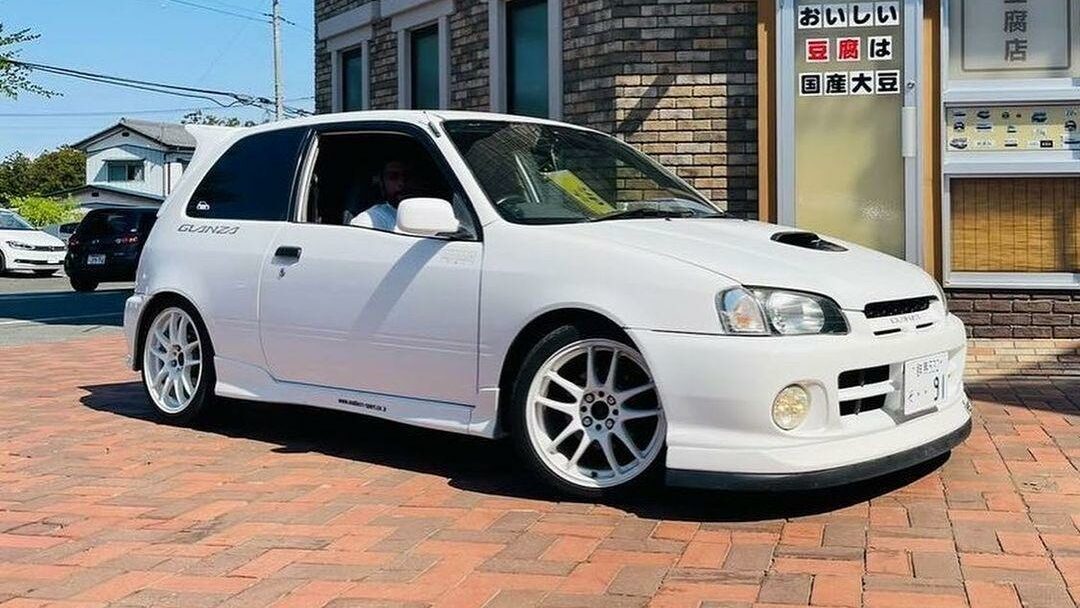
The last-generation Starlet hatchback debuted in 1996 in 2-door and 4-door configurations, and it had a short production run as it was discontinued in 1999. But it has some of the best features unavailable in older generations. Trim levels include the reflet, the entry-level trim, and the Carat, which has a better interior and better paint, is considered the luxury trim. The turbocharged variant was sold as the Toyota Glanza or Starlet Glanza, with the 1.3-litre turbocharged engine being the sportier trim. Other engine options include two 1.3-litre engines and a 1.5-litre diesel. All trim levels got a 3/4-speed automatic or a 4/5-speed manual transmission.
FAQ
Toyota Starlets produced before 1984, first and second generation, are rear-wheel-drive, while the third, fourth, and fifth generation Starlets are front-wheel-drive.
Prices for the Toyota starlet start at roughly $3,000, going up to a maximum of $20,000 for turbocharged and special edition units such as the Glanza V.
Like other Toyotas, the Toyota starlet offers exceptional reliability and bulletproof durability. When maintained correctly, 300,000 miles is easily achievable with minor replacements.
Yes, the first turbocharged Toyota Starlet was produced in 1984 with a turbocharged 1.3-litre engine (2E-TELU), while later model years got the 1.3-litre 4E-FTE, also turbocharged.
Not all Toyota Starlets have power steering, as it was an optional extra during production time in base spec variants, especially those with the 1.0-liter engine.
Yes. Toyota introduced all-wheel-drive in the fourth-generation Starlet GT and fifth-gen Starlet Glanza V, which wasn’t optional in entry-level Starlets.
How To Import a Toyota Starlet
Read our Ultimate Guide on How to Import a Car from Japan.
